
The mission of the 2020 Vision initiative is to promote countywide, regional thinking in the service of enhancing administrative and programmatic educational delivery. Working together on a countywide basis will allow school districts to capitalize on economies of scale while preserving the local, community-based identity and decision-making that is fundamental to the investment in and functioning of our schools.
Sharing Educational Programs: A Quasi-Magnet Model for Ulster County High School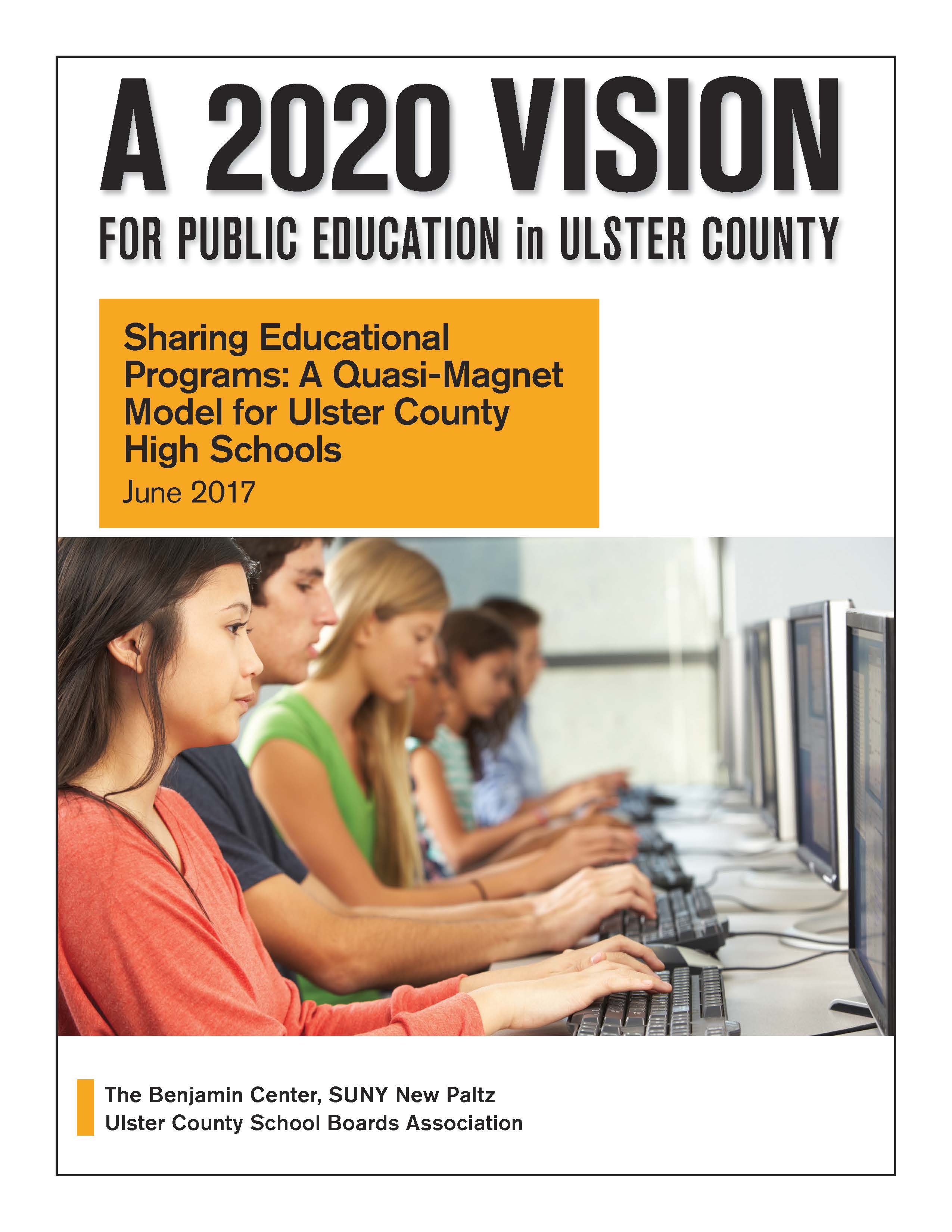
Sharing Educational Programs: A Quasi-Magnet Model for Ulster County High Schools explores a potential model for sharing educational programming among school districts in Ulster County. In this era of fiscal austerity, school leaders, elected board members and professional educators are regularly called upon to sustain educational quality by doing more with less. Dr. Charles Khoury, District Superintendent of Ulster Board of Cooperative Education Services (BOCES), proposes a solution: A quasi-magnet approach to high school in Ulster County in which high school students would complete core academic requirements in their home district, and then be allowed to enroll in specialized courses at another high school in the county if they choose to do so. Dr. Khoury argues that this would enable school districts to develop and nurture deep expertise in a specific academic specialization, leverage their collective resources in the development of that expertise, and allow for a broad range of courses and opportunities for Ulster County students. And importantly, a quasi-magnet approach would permit school districts to retain their local identity so essential to our communities, while also expanding educational opportunity for students in the final stages of their secondary education.
The Flipped Classroom. An Approach to Teaching and Learning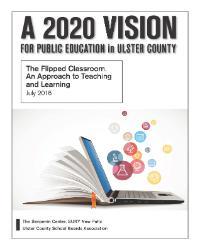
Many teachers are experimenting with a new mode of educational delivery, known as the "flipped classroom." In this approach, teachers create short video lectures for students to watch at home, as homework, and then use class time for application of the material learned outside of class. This paper describes the flipped classroom model, explores its benefits and challenges as well as the tools needed to implement it, and provides examples and lessons learned from teachers who are using the model in their classrooms.
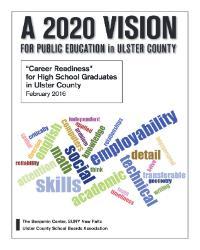
Career Readiness" for High School Graduates in Ulster County
"Career readiness" for High School Graduates in Ulster County is the sixth in a series released by The Benjamin Center’s A 2020 Vision for Public Education in Ulster County initiative. The report examines the meaning of “career readiness,” data on the employment market in Ulster County and the Hudson Valley, and the “skills gap” identified by employers. The paper closes with descriptions of some of the exciting initiatives that school districts in Ulster County have developed to respond to this challenge.
Agenda for A 2020 Vision for Public Education in Ulster County, March 10, 2016
An Agenda For Change through Countywide Collaboration
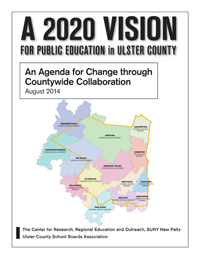 For the foreseeable future, public education in New York faces a great array of interrelated challenges. School enrollments are declining across the state. The student population is becoming more and more diverse. Standards and accountability have undergone significant change. State aid has been reduced and local tax levies restricted. With constraints on funding and additional mandates, school districts are increasingly hard pressed to provide the high quality educational programming that students deserve. And with fewer students to educate, school boards and administrators must consider the efficacy of existing staffing structures and school buildings that were designed to serve greater numbers of students.
For the foreseeable future, public education in New York faces a great array of interrelated challenges. School enrollments are declining across the state. The student population is becoming more and more diverse. Standards and accountability have undergone significant change. State aid has been reduced and local tax levies restricted. With constraints on funding and additional mandates, school districts are increasingly hard pressed to provide the high quality educational programming that students deserve. And with fewer students to educate, school boards and administrators must consider the efficacy of existing staffing structures and school buildings that were designed to serve greater numbers of students.
A 2020 Vision for Public Education in Ulster County provides a venue for conversation about joint efforts to promote the effective and efficient delivery of education in Ulster County through development of educational initiatives, formation of collaborative efforts to promote economic savings, and advocacy for legislative change.
Later School Start Times for Adolescents
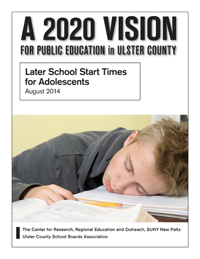 The idea of later school start times for adolescents has become a front burner issue across the nation in recent months, in part as a result of the convergence of two streams of research. First, biological scientists have shown that late-rising teenagers are not just lazy, as stereotypically assumed. Rather, there is an emerging consensus among these researchers that sleep cycles change as children mature into adolescence, causing teenagers to fall asleep later in the evening and sleep later into the morning. Meanwhile, a parallel body of research has identified multiple benefits of adequate sleep for adolescents.
The idea of later school start times for adolescents has become a front burner issue across the nation in recent months, in part as a result of the convergence of two streams of research. First, biological scientists have shown that late-rising teenagers are not just lazy, as stereotypically assumed. Rather, there is an emerging consensus among these researchers that sleep cycles change as children mature into adolescence, causing teenagers to fall asleep later in the evening and sleep later into the morning. Meanwhile, a parallel body of research has identified multiple benefits of adequate sleep for adolescents.
Regional Pupil Transportation: The Promise of Collaboration
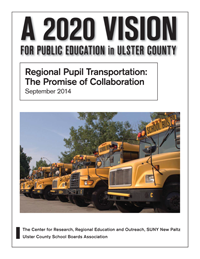 Yellow school buses are an iconic symbol of schooling in America. Each and every school day, across New York, hundreds of thousands of students are bused to school in them. Yet when seeing a school bus pass, or waiting behind one as it picks up or drops off a child, few think about how this service is organized, or its cost. In Ulster County, school transportation—sometimes delivered through contract, sometimes directly with district-owned buses—is provided on a district-by-district basis. And the cost is considerable. In 2012-13, operating and maintaining those yellow buses accounted for about 6 percent of the average Ulster County school district budget; the total expenditure for all eight school districts in the county was $29,642,319.
Yellow school buses are an iconic symbol of schooling in America. Each and every school day, across New York, hundreds of thousands of students are bused to school in them. Yet when seeing a school bus pass, or waiting behind one as it picks up or drops off a child, few think about how this service is organized, or its cost. In Ulster County, school transportation—sometimes delivered through contract, sometimes directly with district-owned buses—is provided on a district-by-district basis. And the cost is considerable. In 2012-13, operating and maintaining those yellow buses accounted for about 6 percent of the average Ulster County school district budget; the total expenditure for all eight school districts in the county was $29,642,319.
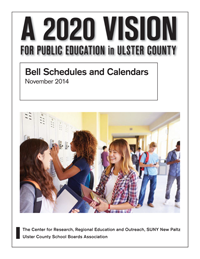 Time is a valuable commodity in education; therefore, systematic consideration of its use is crucial. In New York State, the number of days that children spend in school—and how some of those must be used, for example, for statewide exams—is determined by New York State legislation and regulations established by the New York State Commissioner of Education. But how these days are allocated, within the broad framework dictated by the state, is decided locally by school boards.
Time is a valuable commodity in education; therefore, systematic consideration of its use is crucial. In New York State, the number of days that children spend in school—and how some of those must be used, for example, for statewide exams—is determined by New York State legislation and regulations established by the New York State Commissioner of Education. But how these days are allocated, within the broad framework dictated by the state, is decided locally by school boards.
Independent choices made in each district result in differences in school calendars and bell schedules. This local determination is important, as community-centered decision making for education is a core value for New Yorkers. But at a time when increased inter-district collaboration is being encouraged to reduce the costs of education while sustaining or enhancing educational quality, it may benefit us to think about how coordination of our calendars and schedules might increase our ability to collaborate.
The potential for sharing among Ulster County school districts
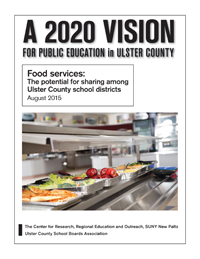 Ulster County school districts Meals for kids in Ulster County schools cost just shy of $10 million last year. About half of this ($4.9 million) was paid for by taxpayers in the form of federal and state reimbursements. In the overall picture of school budgets, food service is not a big ticket. It is just 2% of the total spent in the county on education in 2013-14 ($519,155,596) and less than the amount raised from local taxes ($309,631,685).
Ulster County school districts Meals for kids in Ulster County schools cost just shy of $10 million last year. About half of this ($4.9 million) was paid for by taxpayers in the form of federal and state reimbursements. In the overall picture of school budgets, food service is not a big ticket. It is just 2% of the total spent in the county on education in 2013-14 ($519,155,596) and less than the amount raised from local taxes ($309,631,685).
The percentage may be small, but every nickel counts. Costs of education keep rising and the lid on local revenues will be even tighter next year. Collaboration and efficiency may help us save some of this money. And savings made here then do not need to be made elsewhere, perhaps creating a margin to protect the job of a teacher or another school employee.